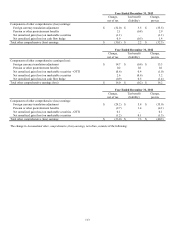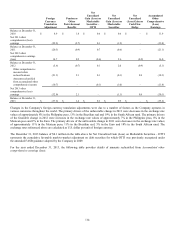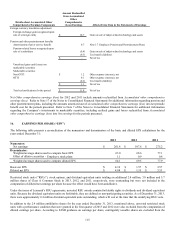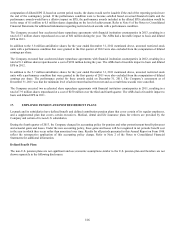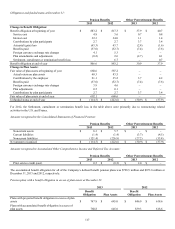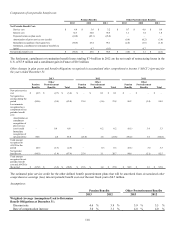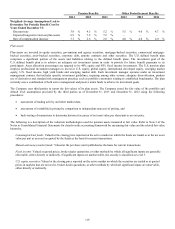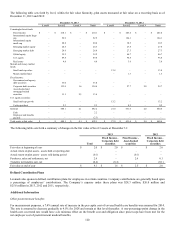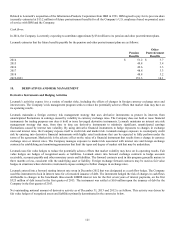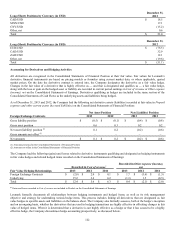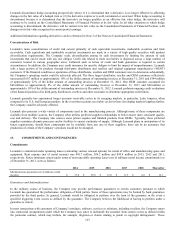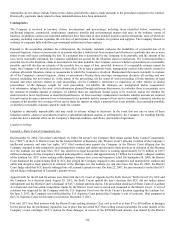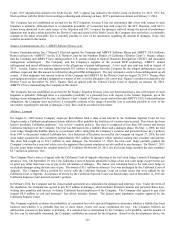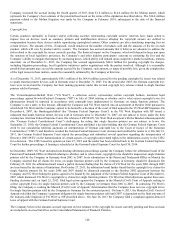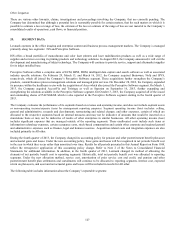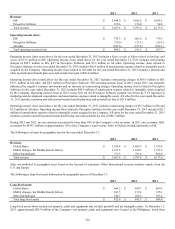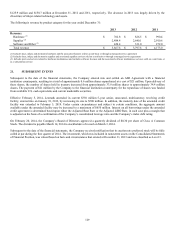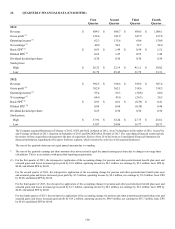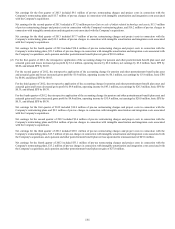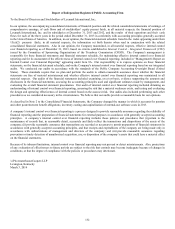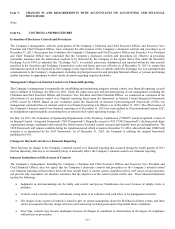Lexmark 2013 Annual Report Download - page 127
Download and view the complete annual report
Please find page 127 of the 2013 Lexmark annual report below. You can navigate through the pages in the report by either clicking on the pages listed below, or by using the keyword search tool below to find specific information within the annual report.
Lexmark discontinues hedge accounting prospectively when (1) it is determined that a derivative is no longer effective in offsetting
changes in the fair value of a hedged item or (2) the derivative expires or is sold, terminated or exercised. When hedge accounting is
discontinued because it is determined that the derivative no longer qualifies as an effective fair value hedge, the derivative will
continue to be carried on the Consolidated Statements of Financial Position at its fair value. In all other situations in which hedge
accounting is discontinued, the derivative will be carried at its fair value on the Consolidated Statements of Financial Position, with
changes in its fair value recognized in current period earnings.
Additional information regarding derivatives can be referenced in Note 3 of the Notes to Consolidated Financial Statements.
Concentrations of Risk
Lexmark’s main concentrations of credit risk consist primarily of cash equivalent investments, marketable securities and trade
receivables. Cash equivalents and marketable securities investments are made in a variety of high quality securities with prudent
diversification requirements. The Company seeks diversification among its cash investments by limiting the amount of cash
investments that can be made with any one obligor. Credit risk related to trade receivables is dispersed across a large number of
customers located in various geographic areas. Collateral such as letters of credit and bank guarantees is required in certain
circumstances. In addition, the Company uses credit insurance for specific obligors to limit the impact of nonperformance. Lexmark
sells a large portion of its products through third-party distributors and resellers and original equipment manufacturer (“OEM”)
customers. If the financial condition or operations of these distributors, resellers and OEM customers were to deteriorate substantially,
the Company’s operating results could be adversely affected. The three largest distributor, reseller and OEM customers collectively
represented $107 million or approximately 18% of the dollar amount of outstanding invoices at December 31, 2013 and $144 million
or approximately 22% of the dollar amount of outstanding invoices at December 31, 2012. One OEM customer accounted for
$48 million or approximately 8% of the dollar amount of outstanding invoices at December 31, 2013 and $68 million or
approximately 10% of the dollar amount of outstanding invoices at December 31, 2012. Lexmark performs ongoing credit evaluations
of the financial position of its third-party distributors, resellers and other customers to determine appropriate credit limits.
Lexmark generally has experienced longer accounts receivable cycles in its emerging markets, in particular, Latin America, when
compared to its U.S. and European markets. In the event that accounts receivable cycles in these developing markets lengthen further,
the Company could be adversely affected.
Lexmark also procures a wide variety of components used in the manufacturing process. Although many of these components are
available from multiple sources, the Company often utilizes preferred supplier relationships to better ensure more consistent quality,
cost and delivery. The Company also sources some printer engines and finished products from OEMs. Typically, these preferred
suppliers maintain alternate processes and/or facilities to ensure continuity of supply. Although Lexmark plans in anticipation of its
future requirements, should these components not be available from any one of these suppliers, there can be no assurance that
production of certain of the Company’s products would not be disrupted.
19. COMMITMENTS AND CONTINGENCIES
Commitments
Lexmark is committed under operating leases (containing various renewal options) for rental of office and manufacturing space and
equipment. Rent expense (net of rental income) was $41.7 million, $39.2 million and $45.9 million in 2013, 2012 and 2011,
respectively. Future minimum rentals under terms of non-cancelable operating leases (net of sublease rental income commitments) as
of December 31, 2013, were as follows:
2014 2015 2016 2017 2018 Thereafter
Minimum lease payments (net of sublease rental
income) $ 33.8 $ 25.8 $ 16.0 $ 11.5 $ 6.6 $ 12.1
Guarantees and Indemnifications
In the ordinary course of business, the Company may provide performance guarantees to certain customers pursuant to which
Lexmark has guaranteed the performance obligation of third parties. Some of those agreements may be backed by bank guarantees
provided by the third parties. In general, Lexmark would be obligated to perform over the term of the guarantee in the event a
specified triggering event occurs as defined by the guarantee. The Company believes the likelihood of having to perform under a
guarantee is remote.
In most transactions with customers of Company’s products, software, services or solutions, including resellers, the Company enters
into contractual arrangements under which the Company may agree to indemnify the customer from certain events as defined within
the particular contract, which may include, for example, litigation or claims relating to patent or copyright infringement. These
123


